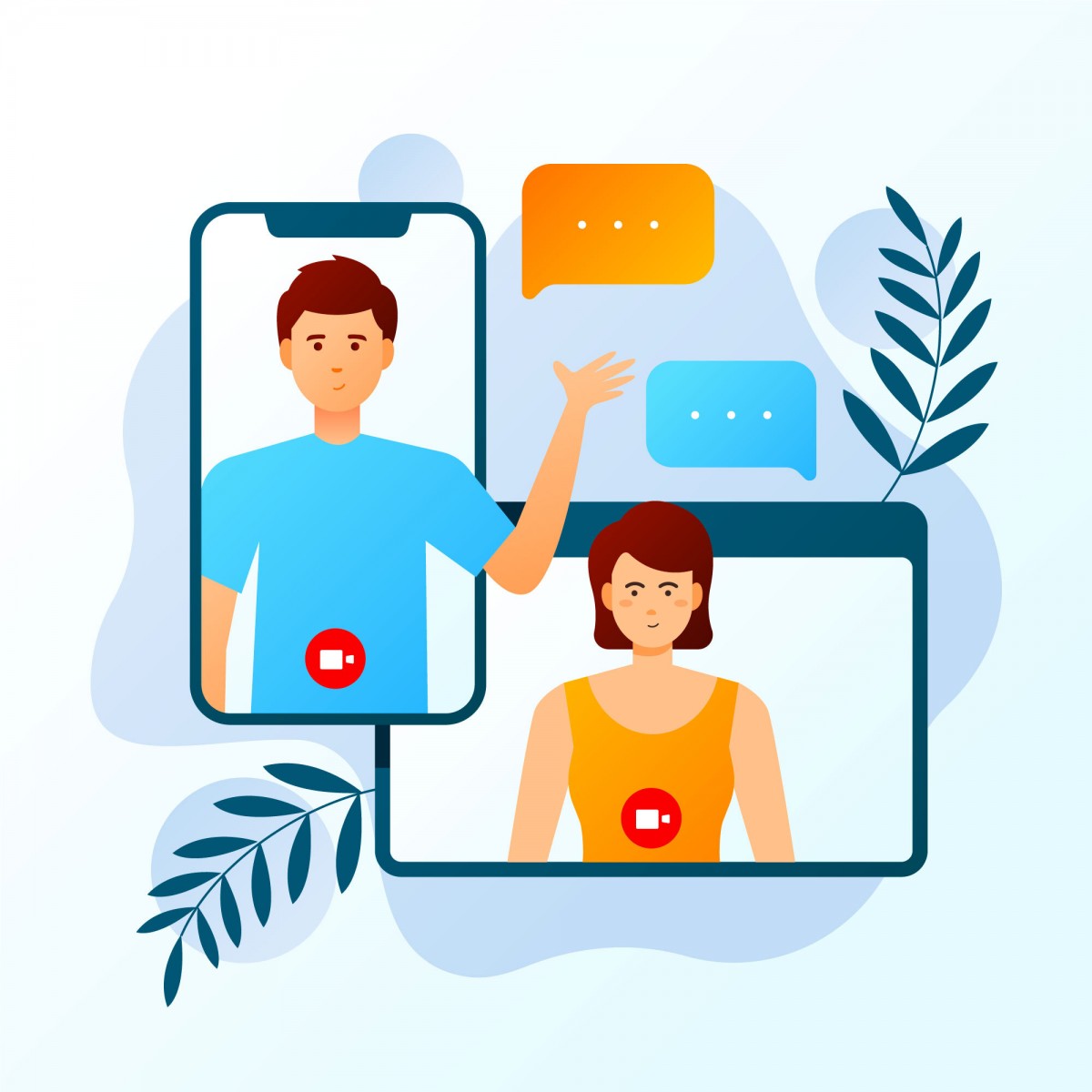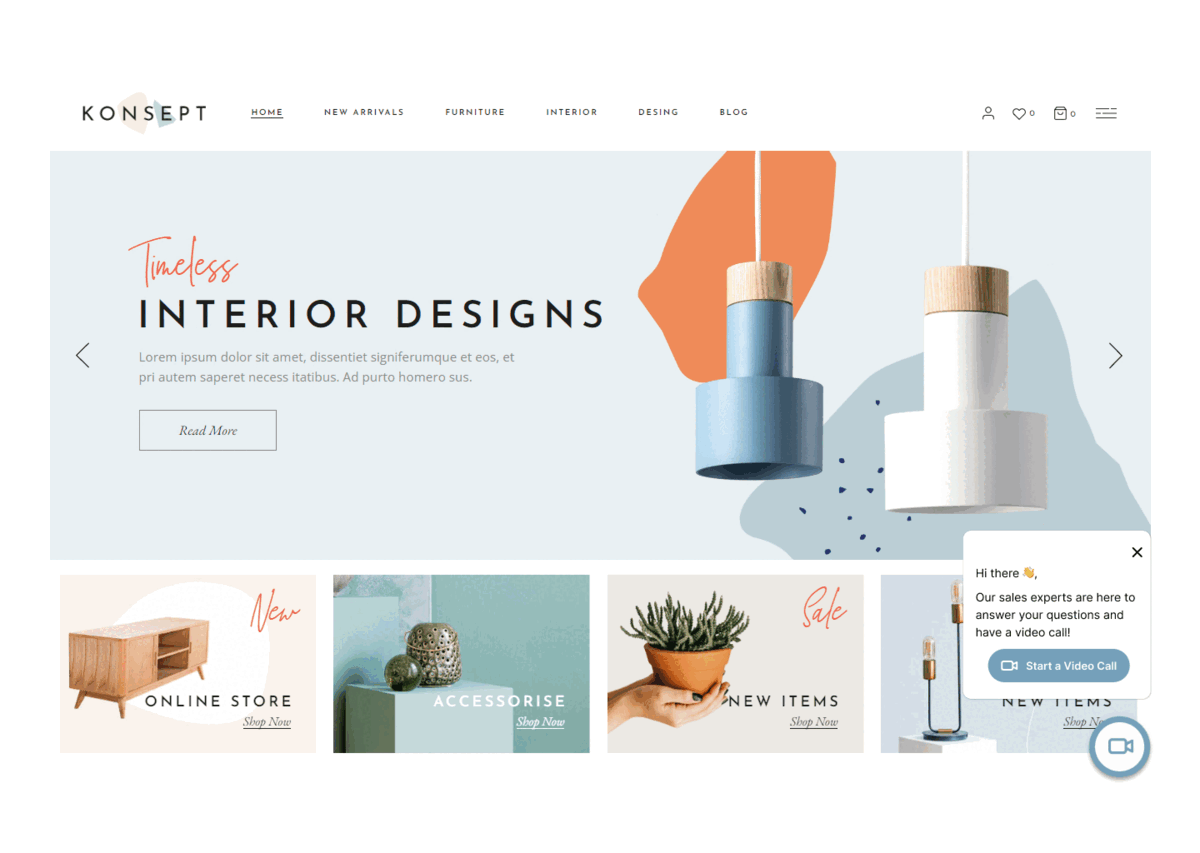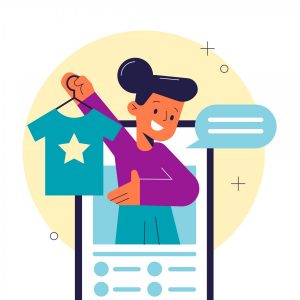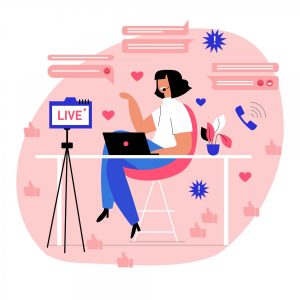Are you tired of the limitations of static chatbots? It’s time to level up your customer experience with one-to-one video calls. Gone are the days of poor customer interactions with a robot. Instead, you can bring the human touch back to online shopping with video calls.
In fact, even big players like Amazon require their managers to attend call center training every year. This provides a personalized experience for their customers.
But why settle for just good enough? With video calls, you can offer real-time, high-quality personalization. It will give your e-shop the juice it needs to shine brighter than a diamond in the rough. Your customers will appreciate the opportunity to speak with a live representative. It will make their experience with your business more enjoyable and efficient.
Don’t you believe me? Suppose you roll with this. When you forget the human touch, online shopping turns into a nightmare. Don’t be that eCommerce business that forgets that behind every order is a real person. With video calls, customers feel like they’re speaking to someone in person.
I’ve discovered a few things that will improve the humanization of your digital experiences. Check it out.
Statistic chatbots lack the ability to provide a genuinely engaging interaction
Let me talk about chatbots for a moment. Sure, they’re convenient. But let’s face it; they can be pretty dull.
Studies show that chatbots are fine, but people still prefer good old-fashioned human conversation.
Customer communication should be fun, easy, quick, helpful, engaging, friendly, and instructive. But ultimately, a chatbot’s usefulness comes down to the consumer’s acceptance. There have been a lot of investigations into this question, and the results have been interesting.
The difference between static chatbots and AI chatbots:
Because static chatbots have limitations, they are capable of poor customer interactions. They are pre-programmed to respond to a limited set of inputs and cannot adapt to the nuances of human conversation.
On the other hand, AI chatbots use machine learning algorithms to analyze data and improve their responses over time. They can understand natural language, recognize patterns, and even personalize interactions based on a customer’s history with the company. With AI chatbots, you can offer your customers a seamless and personalized experience that is impossible with static chatbots.
By integrating AI chatbots with video calls, you can take your customer service to the next level and create a truly exceptional experience for your customers.
An example of a study of Static Chatbots
Chatbot perceptions were the subject of an interesting study by Userlike, a chatbot provider. They surveyed 415 people, and 333 admitted to using chatbots. That is almost 80%.
Yet 60% of respondents said they’d wait in line to speak to someone immediately if necessary. Moreover, 68% were happy with a chatbot’s quick response time. But wait, there’s more to the story.
I’ll tell you about the drawback now.
Most of the time, chatbots can’t understand customers’ messages right away. They weren’t slow. They just didn’t catch what was being asked.
Now I will tell you something more daunting.
It could end the conversation if the chatbot and the consumer didn’t communicate. The linguistic intricacies and tonal differences cause a lot of communication breakdowns. It could be frustrating for customers and lead to dissatisfaction.
I am coming back to study. Only 23% of people would trust a chatbot to resolve conflicts. Most people feel comfortable asking a chatbot about a product. But only a third would use it to pay a bill.
It’s still hard to trust chatbots.
What’s more? 54% said they’d feel uneasy if a chatbot passed for a human. They thought it was downright weird to try to speak like a human and make human jokes. It could also cause customers to lose trust in your business.
Now let’s put all this data aside. Static chatbots certainly have their uses. But customers won’t fully accept them for a while. It should be as comfortable as a video call with a human representative. You won’t regret it!
The increasing demand for personalized customer experiences in eCommerce:
You can’t provide the service your customers want without knowing them. Personalization allows you to learn what they like and want. That way, you’ll give them something they’ll love.
Personalization is no longer just about saying your name
Didn’t it use to be cool to see your name in an email subject line? It’s a new world out there, my friend. Today, personalization means delivering tailored experiences that keep customers coming back. You need it in a crowded, smart market to stay ahead.
Customers like brands that listen to them, get them and cater to them. That’s where personalization comes into play. Personalization lets brands customize messages, offers, and experiences for each customer.
It’s like a journey from marketing to digital chat. It all starts with data. Then, your campaigns, content, and experiences can resonate. All you need is to collect, analyze, and use data about consumer demographics, interests, and behaviors.
Your customers demand personalization
Just think about your own experience as a customer. You love getting personalized offers and recommendations on a brand’s site, right? Would you like content that’s relevant to you or related to something you recently bought? It’s something you’ve come to expect online.
Now that we’re in the digital age. Consumers expect relevant, contextual, and convenient experiences. So they will turn to brands that recognize them as individuals.
Marketers must use intelligent personalization methods to keep consumers engaged and returning for more. No doubt, video calls are a great way to make eCommerce look great. In addition, 91% of customers prefer to buy from brands that provide relevant offers and recommendations.
Business is all about personalization!
Imagine you’re the shopper, yeah? What if you were an impulsive buyer (like buying two candies on sale at checkout)? Buying decisions isn’t always rational since emotions play a huge role, too.
You can’t put a price on emotions. So the most innovative brands use contextual marketing to build relevance, foster loyalty, and boost sales.
People are more likely to buy from brands that know their names and purchase histories. For this to work, you must leverage consumer data across all channels. However, it can significantly impact when done at the right time and in the right context.
Stay lowkey, don’t be creepy!
Customer expectations are high. Their priorities are what they want, when, and where they want it. Therefore, communication with customers must be extremely personal and precise. It must avoid being unwelcome.
For example, data might show that a customer prefers gluten-free products. Use that insight to recommend gluten-free pasta recipes on your website. Less is more when it comes to getting personal. First, hear what your customers want. Then give them what they want.
The benefits of using one-to-one video calls for customer support
Do you think it’s a new channel? Not much. One-to-one video calls have been around for a while. Business success starts with a great customer experience. It’s something customers are willing to pay extra for.
For 73% of consumers, experience is second only to price and product quality. However, you can improve your customer experience with video calls. Here are some benefits that you should consider:
- It increases personal connection and emotional engagement. There will be more human interaction, and conversations will get warmer.
- Through screen sharing, customers and agents can work together on technical or financial issues.
- Video calls to increase efficiency in handling customer inquiries. The faster the problem is solved, the happier the customer will be! It’s a win-win!
- Younger generations like video call more. They’re more familiar with video communication.
- You can chat with your customers immediately, so they don’t need multiple touchpoints. Having to deal with this can be frustrating.
- One crucial customer service KPI is First Contact Resolution (FCR). Your customer service will be more effective with real-time chat.
- You can integrate customer surveys into the video call journey. Gathering customer feedback is now easier this way.
- Customers enjoy friendly conversations when they talk to your contact center reps one-to-one. This builds trust and loyalty among customers.
- Let’s remember. You can customize your company’s video call journey to make it stand out!
The importance of integrating a video chat widget for a seamless and user-friendly customer journey
A good customer experience (CX) means answering customer questions in the most convenient way for them. Customers need the answers at the right time. There’s a lot more to it than you think.
Using a video chat widget on your website is an excellent way to accomplish this CX goal. You can talk to website visitors in real-time or respond to their questions. Video chat widgets are essential for a smooth and user-friendly customer journey.
The video chat widget has a wealth of sophisticated capabilities. You’ll be able to communicate with your consumers quickly and efficiently. One-to-one video calls are a must for business owners because they’re conversion tools. There’s also research to back it up.
Forrester Research says video chat users convert 2.8 times more than non-users.
What else do you want? First, let’s look at examples of big eCommerce businesses improving their customer service using video calls.
- Shopify with Video Calls: This eCommerce platform has integrated video calls into its customer service. It lets customers talk face-to-face with support specialists.
- Sephora with Video Calls: The beauty retailer offers video calls as part of its customer service. In addition, customers can talk to beauty experts live.
- Zappos with Video Calls: The online shoe retailer Zappos has introduced video calls to its customer service. Live video feeds let customers talk one-on-one with customer service representatives.
- Etsy with Video Calls: This site is an online marketplace. Etsy has incorporated video calls into its customer service. So buyers can get product information and help without any hassle.
These are just a few examples of how eCommerce businesses use video calls to improve customer service. It’s similar to in-person customer service in brick-and-mortar stores.
Use video calls to improve customer support efficiency and effectiveness
It’s because of cloud-based video technology that’s efficient and affordable. Businesses are increasingly using video platforms for customer service and building closer relationships. The result will be less churn and happier customers. And the support people can work on more complex stuff.
Let me explain the potential of video calls via an example. Don’t stop reading.
Imagine what happens when a client asks for help via SMS or social media. The agent needs to read the message first. Then, maybe that agent asks for clarification and checks internal resources to pinpoint a solution. Finally, customers get the template response.
Following that, customers often realize they want more information about the responses given. This means customers gotta hit ’em up again, more than once. Support responses are often too long for SMS or social media to be efficient. This could get really irritating. Many consumers are diverted to less convenient channels as a result.
That’s not the case anymore for your customers. Mobile clients also can get quick, efficient resolutions with a video chat widget. But there aren’t always customers looking for mobile-friendly solutions. Some customers want to build a real relationship with your support team. It doesn’t matter if they just want to talk to someone or have complicated questions.
Why settle for a bland and boring chatbot when you can add some pizzazz with a 1:1 video chat? Not only does it add that human touch, but it’s also more efficient and secure. In addition, customers will love personal interaction and faster resolution times.
And you’ll love the cost savings and increased efficiency. However, you don’t want your customer support process to be a snooze fest. So go 1:1 with video chat instead.
Get a reliable and secure 1:1 Video Chat for your eCommerce
Picture this – your customers can now have a personal, face-to-face conversation with a support representative. It will increase trust and satisfaction by making customers feel valued and heard.
But that’s not all! For this to work, you need a reliable and secure 1:1 video chat widget. So first, ensure your customers don’t experience technical issues or privacy concerns. Then, you’ll feel at ease when you use a video chat that is reliable and secure.
Customers expect quick and efficient solutions to their problems in today’s fast-paced world. A high-quality video call without interruption will not only set you apart from the competition. It will also increase customer loyalty and retention.
Video calls also are secured from hackers. Malicious software can let hackers get into sensitive data, like financial info. Because of this, video chat should use secure encryption and authentication protocols.
Furthermore, the video chat widget should work on as many platforms and devices as possible. Besides ensuring security, it’s essential to make sure it reaches a broad audience. You may lose potential customers if the widget is only accessible on specific devices.
So step up your game; integrate video calls immediately; there is no time to second-guess.
Conclusion: eCommerce with Real Human Connection
You’ve read enough about video chat widgets in the article, right? How about using one right now? You can integrate the Arvia one-to-one video chat widget into your eCommerce business. It’s time to bring a human touch to your online shopping experience and boost sales and conversions. Give your customers the VIP treatment they deserve, just like in-store customers, with Arvia’s video call feature.
Now you know how awesome video chat widgets are. I’m sure your customers will like them, and many departments could use them. So don’t wait. You can schedule a free call with Arvia right now to experience the power of video calls for yourself!
Image by Freepik









